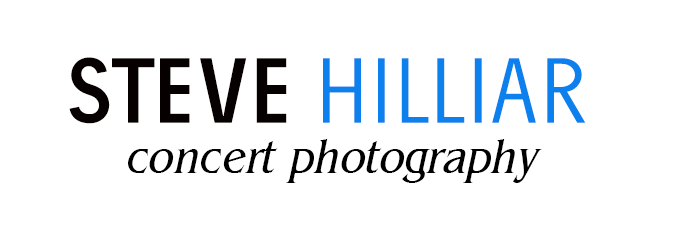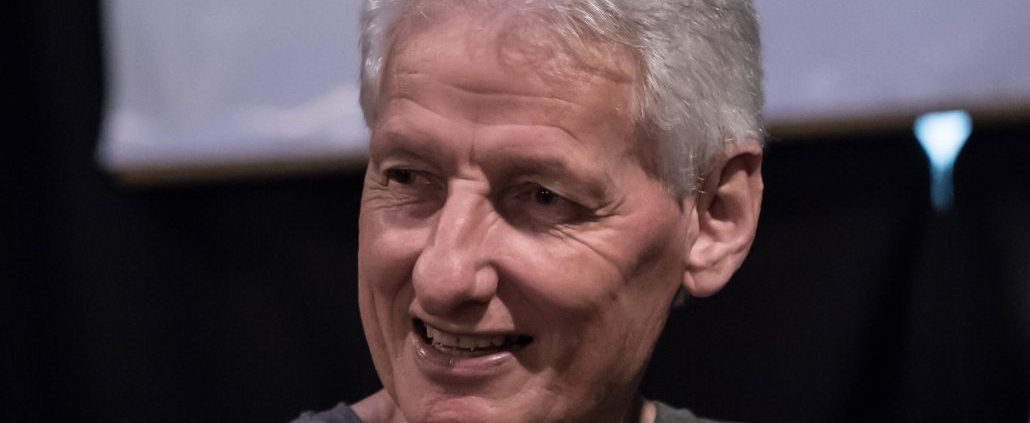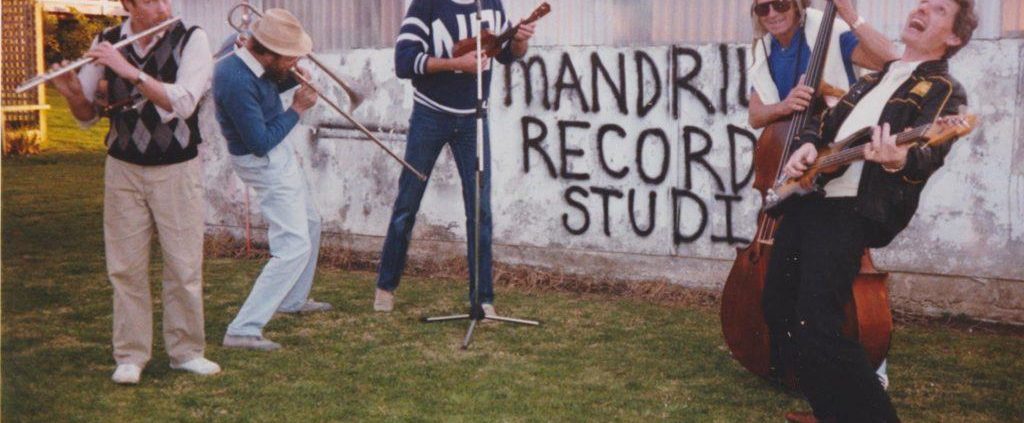This great article was written by Paul Johansen from Stage Sound Ltd
Having done live sound engineering for bands for over 30 years I have at least some insight into what makes a good live performance from the audiences point of view.
Some very good talent is coming through at present and there is little doubt about this. Original bands are becoming more and more popular and the quality of some of the music being written is of a high standard and even world class in many cases. Our rehearsal studio is nearly always full as the various bands work hard on their music and as administrators we certainly enjoy hearing them developing their individuality.
Unfortunately however, we see so often that the stage presentation and the appearance of the band falls far short of their musical and compositional ability. Many bands completely fail to recognise that performing well means a lot more than just standing there straight faced wearing boring looking clothes and not moving very much. This is not so much the fault of the bands themselves, rather it would appear that there is nowhere to learn how to master the art of live performance that can support bands on a part time basis, helping them to acquire the necessary production skills.
I do not by any means present myself as an expert on this subject but in the absence of anything better, I will offer the following insights in the hope that these ideas may strike a chord with those interested and give some benefit to bands wishing to improve their image on stage.
Try to begin your show with some serious impact, ie: the lights are off and you hit the first chord at the same time they come on. Walk on quickly; pick up your instruments (that should already be perfectly tuned) and start playing a great opening number without making a sound. The idea being to try to get the audience sit up and take notice of you. You need to believe that ‘you’ rule the stage. After the first song the spokesman for the group, who should also be the best communicator should name the band, welcome the audience and with little further ado rip into the second number with no noise between the tracks and no discussion between the members. No twanging or tuning noises. No buzzes or bursts of hum or feedback. Look confidant, not sheepish!
Never tune up on stage if you can aviod it, nothing looks or sounds worse. Plug your instruments in with your amps turned right down. Face the audience with confidence and a look that says you are there to do business and never look bored or disinterested. Vocal adlibbing between the numbers needs to be carefully put together or done by a band member who is spontaneous, convincing and perhaps has a great sense of humor. Get this one wrong and you will just look stupid and unprepared. This is not easy to do and comes down to self-confidence and practice and experience. In a nice way you need to feel as though you own the audience. If you feel intimidated by them you will not show self-confidence and this makes it very difficult to break the ice and really reach them. If they think you look silly or nervous they will not take you seriously
If you play upbeat music you should learn to move while you play and this can require a lot of careful rehearsal as well or it can look contrived and unnatural. See if you can get help from a choreographer who understands the criteria. Try to video yourselves during rehearsals or use a large mirror so you can see how you look. Get interested friends or parents to watch you rehearse and listen to their feedback and comments carefully. Keep repeating things until they look and feel right and you can feel the natural flow happening. Move your bodies to suit the music.Artists like Mick Jagger and Bon Jovi are very good at this. Most of the movement should be done by the lead singer or the soloists. Having the singer motionless and the bass player leaping around like a frog is obviously quite stupid! Pick your numbers very carefully and plan the dynamics of the show. Do you want to end on a dull note or a crescendo? Don’t hold lengthy discussions about what you are going to play next and never argue on stage unless you turn it into good comedy and take the audience with you by asking them questions. If you are going to use one liners then make sure they are bloody good ones. If you can get the audience laughing there is a much better chance of keeping their attention. They will love you. If you try this remember the humor must be first class, really funny, no flat jokes and keep them carefully spaced out.
Some Pointers.
Make sure the stage is very tidy as a messy one is distracting for an audience who you want focused on you. They will also think you are disorganized and not take you seriously or see you as being professional. You never want to trip over any of your tackle.
Avoid playing in poorly lit conditions. There is nothing worse than looking at a band who are nothing but silhouettes to the audience. You may as well be a Dee Jay. Hiring some lights for $150 may be well worth the extra cost if you are planning to be successful one day.
Organise a good backdrop that works well with the lighting. A ‘black’ always allows the lighting to illuminate the band itself and make you stand out well. Hide the empty sides or wings also if you can. Position the lights to avoid facial shadows if at all possible. If you use a chaser it needs to be set to match the beat of the song you are playing. Static lighting looks better than a poorly set chaser. Exciting lighting creates action and intrigue. You can never go to far with this aspect of performing.
Line the mic stands up along the front edge of the stage so you are as close as possible to your audience. This enhances ownership. Makes you look proud, forward and confidant.
Use a riser for the drummer. He is action personified and should always be on display. Light the kit if you can. Don’t let him look buried or hidden by it if possible. Get him sitting up high.
Stand in a way that looks best for the band. Tallest in the center. Shortest to the left or right. Everything in harmony in both sight and sound.
Appearance.
This is a big one and one you should not overlook. It can also be expensive but you need to take everything very seriously if you wish to be successful. Don’t fool yourselves, be bold, spend what you have to and get it right. Are you serious or are you here to just fool around? Don’t waste your time if you are because you wont make it. Give it all away now. Just kidding!
I will never forget what a dresser working for TV One told me once, several years ago. She said she would love to dress a Rock Band. When I asked her about this she told me how she would go about it. This is what she said. Look at the member’s faces, body shape and posture. Then ask yourself what in ‘character’ terms they look like. Does one look like a Cowboy, or a Highwayman or perhaps Wyatt Earp? Maybe one looks like a Mexican or a Bull Fighter or a Cat Burglar? Now she never once suggested that band members should actually dress up exactly like these characters but she did say the trick was to bias the clothing slightly towards that particular look. Make them look a bit like what they resemble naturally. Fat guys should wear baggy clothes not tight. Skinny guys should wear close fitting clothes rather than baggy ones. If you look great in a long jacket then wear one. If you look good with a headband, wear one. If Cuban heeled shoes look right on you then great, do it. How about a choker or a bandana? Do sun glasses work for you? Hair should suit the face rather than what you think is trendy. If makeup works well to highlight your bland eyes then wear it. Don’t mess around just do it. Remember you are there to entertain people. You are the focus of attention while you are on stage so you need to look your very best to go down well with the audience. Now the final key to all this, and this is the tricky one, is to make it all gel together and look harmonious rather than a mismatched shambles. You may well need outside help to achieve this balance. Does all this sound too difficult? Well I’m sorry about that but you had better get used to the idea because there are literally hundreds of bands out there all striving to make it but in any one year you can count them on the fingers of one hand and you can bet your bottom dollar, that of those that make it, as well as sounding good they certainly look good too.
Even the really good bands seldom get everything right because it is very difficult to achieve a perfect balance. Think about the really big names in history and watch their video clips and their concert DVDs. Watch how they stand and move on stage and see how natural it all looks. They probably rehearsed every move or their experience means they cannot get it wrong because they know each other so well they can predict and preempt what is happening without even trying. It just seems to flow both musically and visually.
Don’t think this all comes easily or you will be in for a rude awakening. It is important to realise that you have some hard work to do and you may need to spend a lot of time and some good money to get there, along with seeking out some professional advice and guidance. The more you put into your act the more convincing it will appear. Very few of the top bands are able to rely on their music alone to get to those high places. Production is very important indeed unless you are playing to a blind audience.
Here are some thoughts on live production.
Often the way a band’s participants would like to play and present themselves clashes head-on with the way an educated and responsible sound engineer would produce a show to the benefit of a paying audience. However this is unlikely to be the case if the musicians are experienced and mature.
The competent soundman should have the objective of reproducing a bands sound as faithfully as he knows how. In order to do this successfully he will need the full co-operation of the band itself. We have a quaint little saying in Pro Audio that goes like this: “Shit in, equals shit out”! In other words if the band insists in giving us a crappy sound then that is exactly what the audience is going to hear.
To explain things in a way that is easy to understand we need to take things step by step. When a band understands the fundamentals properly all things become possible. To appreciate this you need to understand that to get the best out of a PA system it needs to be used within its realistic operational parameters. This means it must be operated within a margin of ‘headroom’.
Headroom in a PA system is the margin of available power left over when the system is running at the normal operating volume level. When a sound system is being pushed too hard there will be no headroom margin at all and this will result in severe distortion every time a loud note is produced. A band does not need to be loud on stage to produce a good result through a large PA rig; in fact quite the opposite is true. Sound men don’t like really loud bands or at least that’s the way it should be because, as a rule, they know they will be against the odds getting them to sound good right from the beginning. To anyone but an idiot they mean big trouble. The big problem is all about what we call spill.
What Is Spill?
Spill is the sound that pours into a mic transducer from things other than that which it is placed in front of. Spill is the big enemy! We should all strive to keep it to a minimum. If we have six mics around a drum kit then all of these mics pick up sound from all over the stage and the reflected sound as well. They will of course pick up the drum kits sound louder because they are so close to the various items of the kit but nevertheless they will still pick up something from all the other items on the stage as well. It is just a question of how much. Spill also causes phase shift distortion. This occurs when sound is slightly delayed by distance and adds and cancels when it is picked up by the other mics.
Conduction. This is a problem that is less obvious than spill but can be just as annoying. It is caused by mechanical vibration from amplifiers sitting on a soft or loose stage floor flowing up the microphone stands. At its worse it can result in a single resonant frequency that dominates the entire performance. If the stage floor is not solid keeping the backline down in volume is the only solution.
If we were to consider the ideal situation there would be no back line gear on the stage at all and the band would be hearing themselves through the monitoring system. They would set their tonal sounds and effects etc using pre-amps. Here again in an ideal world the monitoring system would be an ‘In Ear” monitoring system. No loudspeakers would be used on stage at all. When a lead guitar player with a 500 watt Marshall head unit and a huge quad box bowls up onto the stage the sound man is likely to be thinking, “Bloody hell here we go again”. Things may actually be almost tolerable until he watches the power freak musician run his hands along the knobs and wind the whole thing flat out. For the sound man this is a recipe for disaster. He is effectively beaten before he even gets started. He can leave the guitarist completely out of the mix but he can’t overcome the spill. The spill is also what goes into the guitarist’s vocal mic that is placed directly in line with his instrument amplifier. Adding to the problem this changes as he moves from side to side exposing the mic more or less to the crescendo coming from the offending amp. It also spills into any other mic that is present on stage to varying degrees and it cannot easily be eliminated. Noise gates can be useful but they are tricky to set up well, take time to do so, and often don’t do very much. The idea is to reduce this harmful effect by moderation and technique rather than deal with it later.
Loud guitar players are certainly not the only problem to plague the well-meaning sound engineer.
More often than not the problems begin with a hard-hitting acoustic drummer. The bass player, who usually stands alongside him, turns up so he can hear himself over the thunderous drum kit and the bass, which general spills everywhere, now pours into the drum mics and its all over rover. Everyone else in the band cranks up as well, so now we have a vicious circle. The bands don’t understand the resulting ramifications and so chaos is the only possible result. The sound man thinks, “These guys don’t need a PA” and wants to walk out because he realises the audience is about to start blaming him for the lousy and hellishly overpowering sound that he is unable to control. The publican spits the dummy and the whole thing boils over into a hideous row. If you get the general drift of what I am trying to say here, lets discuss what can be done to address the various issues.
The stage cavity itself can sometimes act like a nasty little confining echo box that holds the sound in and makes it difficult to control. Everything is done in a tight little reflective space so spill can become a serious problem even when the instrument amps and the drummer are holding back. Every open mic channel is a spill collector whether we like it or not. The idea is to minimise it. The sound man likes to have the ability to control and balance all the instruments independently of each other. Things can turn to custard once he loses the ability to achieve this and it can be demoralising for him and musically destructive. Even if the PA is very powerful and overload is not an issue, spill can still ruin the overall sound quality.
As a contributing musician you need to get it into your head that if you are going to sound as good as you can to your beloved audience you must trust the sound man and fully co-operate with him so this can be achieved.
A guitar player can place his amp sideways if he needs to run it loud so that it is not facing directly into any microphones. It is far better to just turn it down. If you can’t get the sound you want at a lower volume then experiment with various distortion pedals and equalisers until you can.
A bass player can play with a more trebly sound. In other words try going for more of a twang rather than a boom sound as this will greatly reduce the spill and clean the sound up tremendously. Turn your bass tone control anticlockwise and hit the strings closer to the bridge to achieve this. If you really want a boom sound then the sound engineer can do this at the mixing console whilst keeping it off the stage itself.
A drummer can use lighter sticks and learn to be more restrained. The best kits of all as far as the PA sound is concerned are the electronic ones as these have their own volume controls and produce no natural sound from the heads themselves. The drummer hears everything through headphones or the monitoring system so there is virtually no spill. Also they need no mics around them so they collect no spill either.
Rhythm guitarists and keyboard players are seldom a problem, but keeping the volume down still applies to them as well.
The muses in a band need to learn an attitude of empathy toward the sound engineer and see him as a very helpful associate and not someone who is there to make life difficult for them. Doing sound for a band that you don’t know from Adam can is a daunting task especially if they decide not to co operates. Musicians who don’t like sound men may have either been the victim of a bad one or failed to understand the criteria when they were setting up or have heard another band sounding really bad. It may well have been that they were listening to an ignorant band who were hell bent on playing far too loud on stage.
The whole game is about subtlety. If you want to hear things loud it is far better to hear it from the fold back system because it produces far less spill than a backline amp does. This is because the wedges face in the opposite direction to the microphones. In ear systems produce no spill at all and are a wonderful contribution to the world of excellent sound quality. The problem is not many bands like them or trust them as yet although this would appear to be changing now.
The key as I say is understanding and if you want your band to sound really good to your audience then the quieter you are prepared to play on stage the better your music will be reproduced through the PA system. You need to learn to forget your ego and focus on the art of moderation fully aware that if the audience go away contented and impressed there is a good likely hood that they will be back for more and if you can achieve this then you may be well on your way to becoming a successful act. Think about it!



